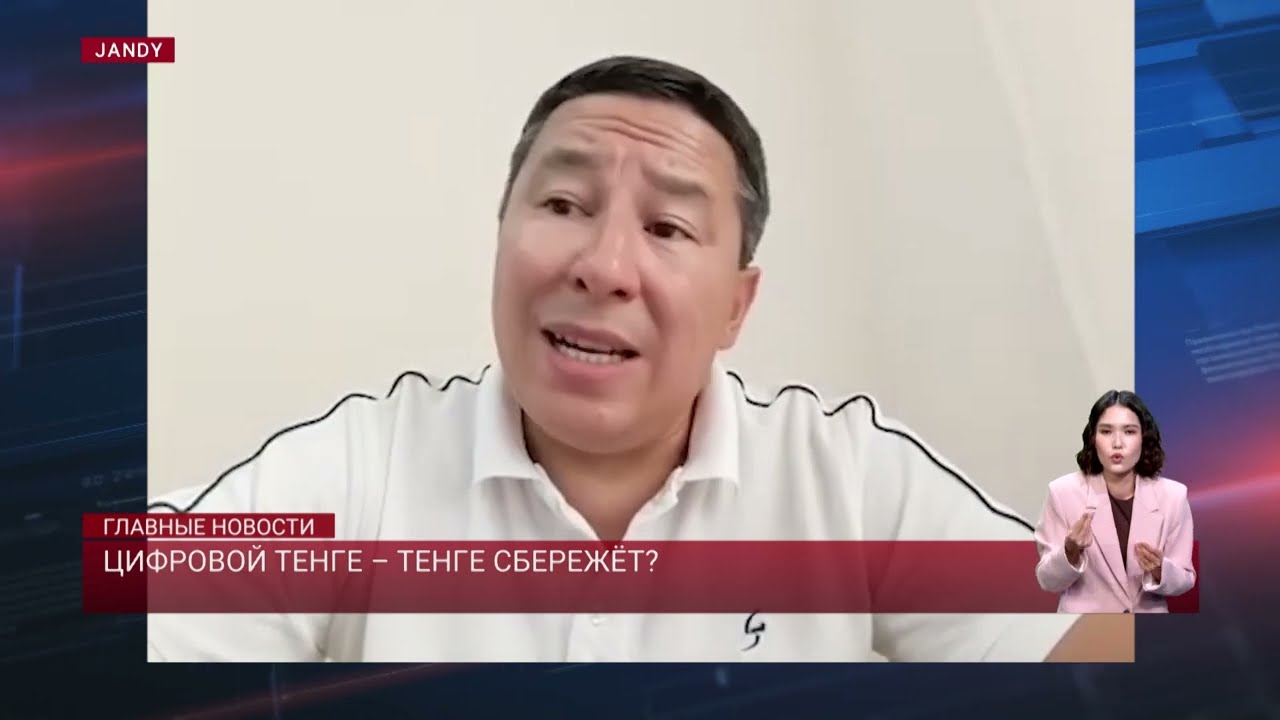– Askar Baurzhanovich, according to your estimates, what is the state's share in the country's finances today?

– In Kazakhstan, the total amount of revenue is more than 40 trillion tenge, or almost 40% of GDP, if we take into account the budget, quasi-public sector and extra-budgetary funds. Thus, the share of the state in the country's finances is very high. At the same time, we see that the flows of extra-budgetary funds, such as the UAPF, GFSS, and MSHI, are increasing, and almost 3.3% of the country's income is redistributed through these funds, which is comparable to taxes due to their mandatory nature. The burden on the payroll is increasing, and most of this burden occurs outside the budget. It is predicted that the burden on the FOT will increase from 36% to 41%, which exceeds the average of the OECD countries.
– In your opinion, what is the reason why the Ministry of Finance and the Ministry of Finance do not consolidate the funds of extra-budgetary funds into the national budget? Have you seen a solution to this issue in the draft of the new Budget Code?
– In the new draft Budget Code, an attempt has been made to bring at least consolidated accounting of extra-budgetary funds and consider their income and expenses together with the state budget. However, in practice, the financial flows of extra-budgetary funds, such as the UAPF, GFSS and FSMS, are withdrawn from budgetary procedures. Consequently, both expenditures and revenues of these extra-budgetary funds are isolated from budgetary control.
The Government could consolidate extra-budgetary funds, primarily the Federal Migration Service and the Social Insurance Fund, since they operate on a solidarity basis. And the functions of these extra-budgetary funds could easily be financed within the budget through taxes. Previously, before the creation of the Federal Migration Service, the committee for payment of medical services successfully coped with its tasks. Perhaps it would be worth returning to this practice, but the social bloc and representatives of extra-budgetary funds resist this idea, because they do not want to give up financial independence and lack of control over their funds. They manage financial flows independently, and they are not subject to any serious restrictions and control measures that are within the budget.
– In this regard, why is the state following the lead of extra-budgetary funds? What is the state's interest?
– This concerns important decision-making issues. The decision-making system is designed in such a way that it does not allow for significant reforms. If there are contradictions between the economic and social blocs in the government and all the arguments point to the fact that it would be more effective to consolidate these extra-budgetary funds into the budget, but the social bloc opposes this, then there are no quick and effective procedures to resolve this conflict. Therefore, we do not see the possibility of implementing such a decision in the near future under the current leadership of the social block.
– If we talk about the cross-subsidization of the economy by the Samruk-Kazyna fund and the low dividends paid by quasi-state companies. What are the main elements of quasi-public sector reform?
– The issue of the effectiveness of the quasi-public sector has long been on the agenda. The Samruk-Kazyna Fund was established on the model of the Singapore Temasek Foundation in order to increase the long-term value of state assets and profitability. However, since the main shareholder of Samruk-Kazyna is the government, the fund performs social tasks that contradict its financial interests. One of these tasks is to subsidize the provision of services at reduced tariffs that are lower than profitability or cost. For example, this applies to passenger transportation, mail, fuel, gas and other goods and services that are sold by quasi-public sector entities at a loss.
The amount of subsidies to the economy by the Samruk-Kazyna Fund is 1.2 trillion tenge per year, which significantly limits the payment of dividends to the budget. A more effective approach would be to gradually eliminate cross-subsidization and switch to working on market principles, where the main goal is to increase the value of assets and profitability of the business. At the same time, if the Samruk-Kazyna fund makes a profit, then a significant part of it, for example, 50-70%, should be sent as dividends to the budget. Then the budget should already allocate these funds in targeted ways in areas that require subsidies, but through the state budget. And currently, such subsidies are given indiscriminately to all consumers, regardless of income and financial situation, and not targeted.
The main problem with Samruk-Kazyna is that it is run by the government, and its board of directors includes members of the government. Since the fund is managed by the Government, it performs the tasks that it sets for it in accordance with its own priorities. If we want to put it on a market track, then I believe that the government should abandon direct management and entrust this task to independent directors and managers, whose goal will be to focus on the effectiveness of the fund.
– Regarding the budget deficit and borrowing, the Ministry of Finance believes that we are in a non-critical zone. Is it the technique or the unwillingness to see the problem?
– The point here is that the Ministry of Finance is guided by international standards, according to which public debt is considered acceptable in the range of 50-70% of GDP. Currently, the level of public debt in Kazakhstan is about 23% of GDP, which corresponds to IMF standards. There are examples of other countries where the national debt exceeds 100% of GDP, and this distorts the picture. For example, the United States has significant public debt, but its economic strength and economic structure allow it to manage this risk.
For commodity-based economies such as Russia, Norway, Azerbaijan and Chile, the debt threshold is usually lower than in developed countries and amounts to 20-30% of GDP. Given the structure of our economy and dependence on commodity prices, it is better to focus on a more conservative level of public debt. We believe that the maximum level for Kazakhstan should be about 25% of GDP in order to avoid serious financial risks and ensure budget sustainability.
An increase in the level of public debt can create an additional burden on the budget and increase risks in the event of crises, as we discussed at the recent round table.
– What consequences can there be for the economy if you do not increase the national debt, where will the state take the money in this case?
– The budget consists of two main components: income and expenses. Borrowing is necessary when expenses exceed income. There are two ways to reduce the level of borrowing: increasing income, which is a long-term goal, and optimizing expenses. Attention is focused on the latter. The Head of State spoke at the Assembly of the People of Kazakhstan about the potential for cost optimization and the need for fiscal austerity. Consequently, a serious limitation of the budget deficit is required in order to avoid its proliferation. Previously, the goal was set to reduce the budget deficit to 1% of GDP, but it has not been achieved for many years. This indicates a lack of efficiency in optimizing costs.
– According to TALAP, over the past three years, spending growth has amounted to 60%, with the main part related to current expenses and public procurement. Is it possible to indicate which government agencies and national companies have significantly increased their procurement budgets? Or is the increase typical for all government agencies in general?
– The increase in expenses is typical for all budget items of government agencies, since the main part of them falls on current expenses. They mainly depend on inflation, that is, on changes in prices and tariffs. Since we had high inflation in previous years, all these expenses were indexed. This is due to a primitive approach to budget planning, when the expenses of the previous year are taken and indexed by a certain coefficient. As a result, the limits of these expenses are increasing, but administrators do not analyze how effectively these funds are used and for what purposes they are directed. The budget structure shows that salaries and direct payments to the population account for only 35% of state budget expenditures. The remaining 65% is spent on various purchases, the purchase of goods and services, capital expenditures and construction. And there is a serious potential for optimization here.
– Can we say that the figures you have given regarding the fact that 65% falls on the category of expenses "Construction, repairs, purchases, subsidies" are related to the implementation of the national project "Comfortable Schools"?
– The budget growth is connected not only with the implementation of the "Comfortable Schools" initiative, for which 500 billion tenge was allocated last year. In the total amount of budget expenditures amounting to 27 trillion tenge, its share is insignificant. In addition, the project is funded by a targeted transfer from the National Fund. There are other items of expenditure that contribute to budget growth, such as financing the quasi-public sector or subsidizing various sectors of the economy, including interest rates on business loans.
– If we talk about evaluating the effectiveness of subsidies, the task was set to conduct an analysis, but there are no results yet.
– For many years there have been discussions on evaluating the effectiveness of state support measures. It includes not only subsidies, but also concessional lending, as well as guarantees. However, no one has conducted such an assessment so far. There was also an initiative to introduce counter obligations for businesses. It was proposed to require companies receiving state support to demonstrate the effectiveness of this support, including profit and employment growth. However, this information is not publicly available.
– What do you see as the possibilities of optimizing the budget?
– Currently, we continue to finance the quasi-public sector by providing loans and increasing the authorized capital. As I have already mentioned, the quasi-public sector not only does not pay enough dividends, but also receives huge funding from the budget. And if you add up two figures, then the same Samruk-Kazyna has received more from the budget over the years than it has paid dividends, which makes it an unprofitable asset for the state. The volume of subsidies is increasing, including significant amounts in agriculture. However, the effectiveness of using these funds raises questions, since the industry has remained low-productive for many years, unlike neighboring countries.
I believe that there is significant potential for optimizing local budgets. As more and more powers are transferred to local authorities, as well as related taxes (part of the CPN has already been transferred to local authorities), the financial condition of local budgets is strengthening, but the effectiveness of spending remains in doubt. At the local level, you can see many examples of inefficient use of funds. Even in the case of flood control measures, it became known that more than 1 billion tenge was stolen. Thefts mainly occur at the expense of construction, major repairs and landscaping.
I think it is necessary to strengthen control and monitoring by maslikhats and the public. Any facility should be subject to close public scrutiny. For example, the issue of dismantling the pedestrian bridge near the Astana Opera raises doubts about the need for such costs, given the other problems of the city.
In general, this is a serious issue for urban planning. We see that large sums are invested in ill-conceived expensive facilities, which are subsequently little used by citizens. At the same time, they require large expenses for their maintenance.
– You have touched upon the topic of low tax collection. How does the state solve this problem? At the same time, we are seeing an increase in taxes for entrepreneurs and the introduction of various fines.
– Currently, tax revenues to the treasury amount to only 16% of GDP, while government expenditures amount to about 23% of GDP. This difference indicates the need to increase the tax base.
There are two main ways to increase tax collection. The first is an increase in tax rates. However, this decision may have a negative impact on the economy and business. The second way is to work on increasing the tax base. This path is more complicated and takes time, but it is more effective in the long run.
Now the government is inclined to raise taxes. Before that, it was proposed to increase VAT, now the CPN rate. But it is more effective in the long term to work on improving the business climate and tax administration. A large proportion of the economy is in the shadows, especially in the field of small and medium-sized businesses. This is due to the heavy tax administration procedures and high penalties. It is necessary to reconsider the approach to tax collection, making it more stimulating and convenient for taxpayers.
Author: Майра Медеубаева
Source: https://inbusiness.kz/ru/news/chto-segodnya-proishodit-s-byudzhetom-kazahstana



